Minds On
Recycling and the environment
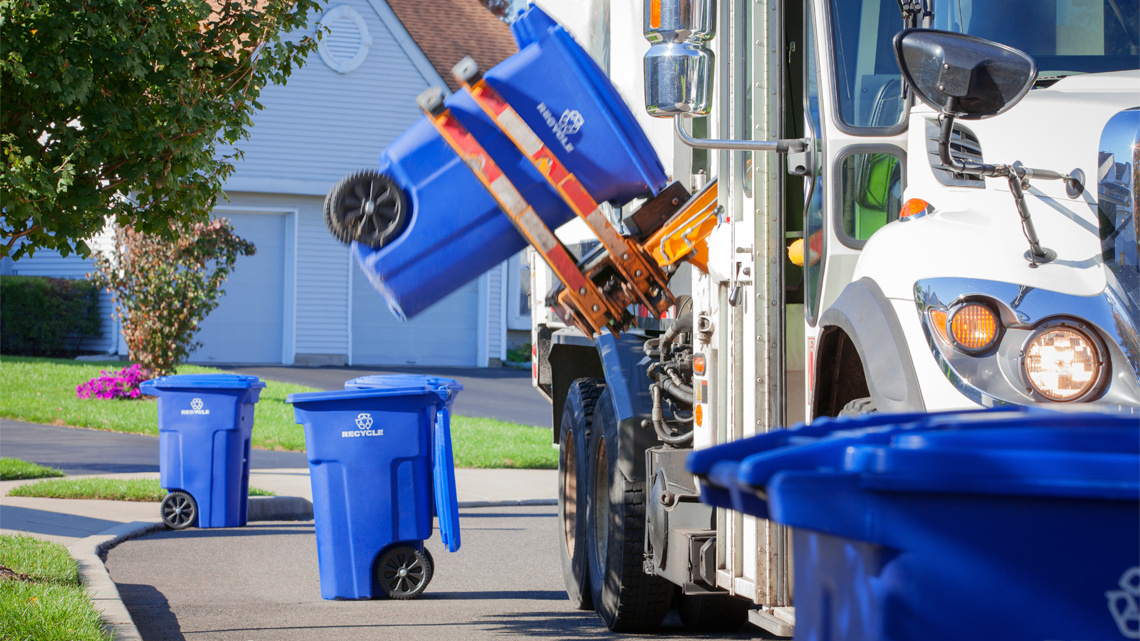
Explore the TVO video to learn more about recycling. Then, answer the following questions.
- What programs are in place in your community to reduce the amount of garbage going to landfills?
- How do these programs benefit the environment?
- Which levels of government are involved?
Record your ideas on paper, on the computer, in an audio clip, or using another method of your choice.
Action
Reduce, reuse, recycle
The environment is a primary focus of many levels of government.
Each level of government runs various programs in order to promote environmental sustainability.
Press Environmental Sustainability to find out what this term means.
Environmental sustainability means taking care of our planet so that we can have enough resources for now and for the future. Environmental sustainability may focus on protecting nature, using clean energy, recycling, and much more.
One of the big focuses for municipalities is recycling and the three "R’s". The three "R’s" stand for reduce, reuse, and recycle. Recycling helps reduce the number of items that end up in a landfill and pollute the environment.

Landfills are locations where disposable materials are sent and sometimes piled or buried underground. This can pollute the soil and water systems.
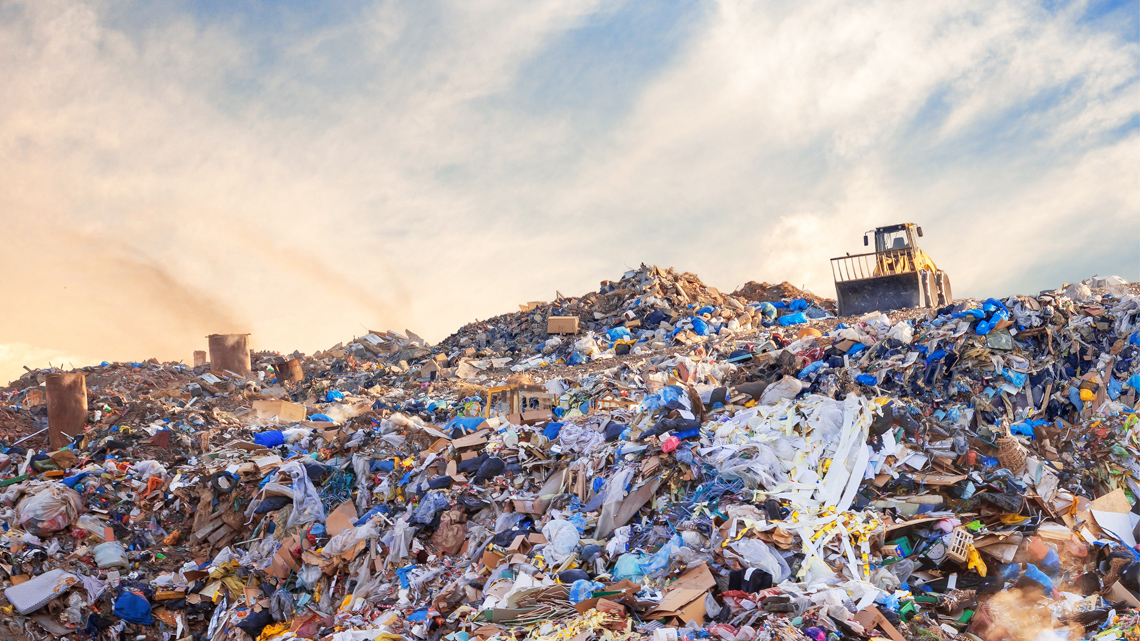
Press the following tabs to access the definitions of reduce, reuse, and recycle.
Ontario’s recycling program: Blue box program
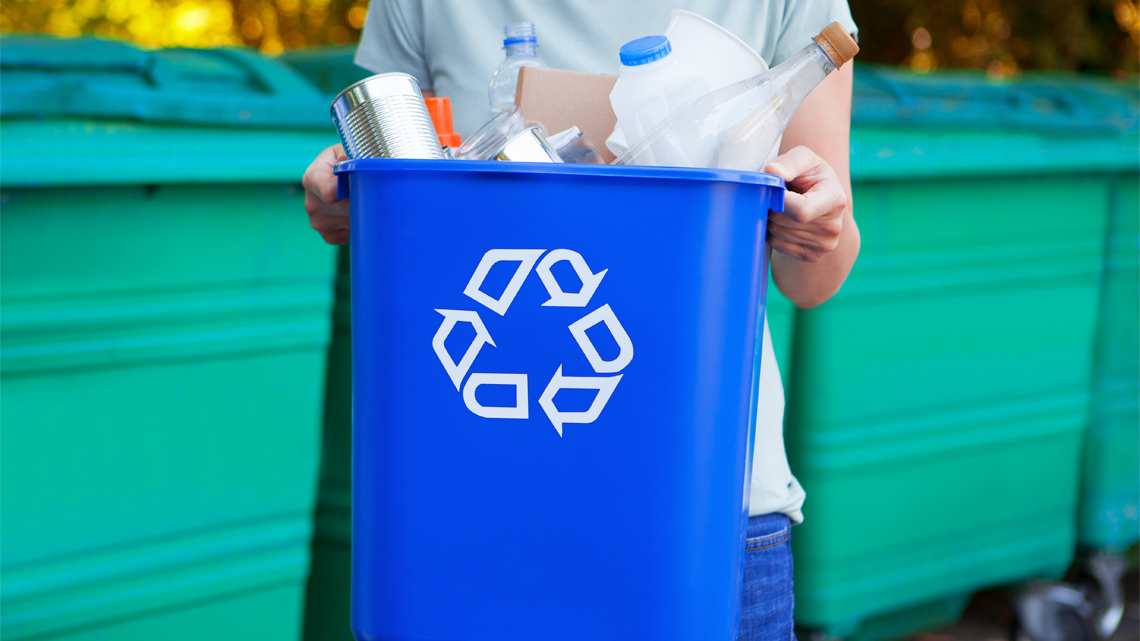
Municipalities are responsible for managing residential blue box recycling programs. Each municipality has its own rules about what can and cannot be recycled through the program.
Explore the different recyclable items for three different municipalities in the following tables. Choose two of the examples provided, or another municipality of your choice, and search for similarities and/or differences of the items that can be collected.
Record what you noticed using a method of your choice.
Municipality A
| Glass | Bottle, jars (lids on) |
|---|---|
| Rigid plastics |
Food jars, tubs (lids on), clear food containers/clamshells, disposable plates, cups, beverage bottle (lids on), detergent/soap/shampoo bottles, clear CD/DVD cases *note: all black and/or compostable plastic goes in the garbage |
| Soft, stretchy plastics | Grocery/retail shopping bags, produce food bags, bread bags, milk bags, sandwich bags, newspaper/flyer/magazines, dry cleaning bags, over-wrap, frozen fruit/vegetable bags, garden soil/compost/road salt bags |
| Metal | Aluminium/steel food and beverage cans, aluminum trays, pie/roast pans, cookie tins, aerosol cans (empty), paint cans (empty) |
| Paper/Cardboard | Paper bags, mail, envelops, newspapers/flyers, gift wrap/tissue paper/cards, shredded paper, soft/hard cover books, cartons/boxes, spiral wound cans, boxboard, corrugated cardboard, rolls (toliet paper, paper towel) |
| Styrofoam |
Foam food and protective packaging (plates, cups, egg cartons, takeout containers, trays), protective packaging (shipping, electronics) *foam packaging peanuts are garbage |
Municipality B
| Plastics | Bottles, lids, containers, take-out food containers, clamshells and trays, single-serve coffee pods |
|---|---|
| Glass | Glass bottles and jars |
| Polycoat | Boxed containers for beverages and soups |
| Metal | Tin food cans, lids and beverage containers, and aluminum cans |
| Paper | Newspapers, magazines, printed paper, and shredded paper |
| Cardboard | Corrugated cardboard, box board, paper board, and cartons |
Municipality C
| Paper products | Newspapers, flyers, junk mail, magazines, soft cover books, fine paper, paper egg cartons, boxboard (e.g. cereal boxes) |
|---|---|
| Cardboard | Flatten and bundle cardboard |
| Containers | Pop cans, milk cartons, juice boxes, metal cans, all #1 and #2 plastic containers, glass bottle and jars |
When you are finished, respond to the following questions:
- How could these differences impact the environment?
- Why might these differences exist?
Press Hint to reveal suggested answers.
How could these differences impact the environment?
- Products are still ending up in the landfill.
- The differences can impact the amount of garbage that will end up in a landfill.
Why might these differences exist?
- differences in infrastructure
- differences in funding
Changes to the blue box program
Recycling programs are often organized by a municipality. A municipality is a specific area, city, or town where people live, work, or play. Each municipality has its own government that is responsible for taking care of things like roads, parks, schools, safety, and even recycling programs.
In 2022, the Ontario government made key changes to the blue box program, to ensure the people or companies that make the products are fully responsible for managing and paying for their products and packaging. This meant that municipalities were less responsible for their recycling programs.
Explore the following images and descriptions to better understand how these changes will benefit both people and those who produce the products.
Impact of the blue box program
With changes to the blue box program, municipalities will need to think about how these new rules will impact the way they currently run their recycling programs. In the TVO article, “The uncertain future of Niagara’s unique recycling program”, Justin Chamber highlights a few concerns about the changes to the blue box program. Niagara’s recycling facility is unique because it donates money that is earned to the community and charities, produces Ecoglass, as well as recycling Styrofoam and black plastic, which many other facilities do not do.
Explore the following section of text from the article that shares other concerns about the change.
“[Niagara recycling] employs about 90 people, including some with developmental disabilities who sort material. The region hopes a buyer would keep workers on at least throughout the transition, although Kraft says the non-profit — which owns the Ecoglass trademark but not the facility or equipment — would likely be disbanded in that scenario. ‘We think it's going to be a significant loss to the community when this transition does occur,’ he says. Kraft adds that it would be a shame to lose the facility given the long relationship it’s had with the region.”
The Niagara recycling program is not the only one concerned. Explore the following video from CBC News that highlights a few other concerns about the recycling program.
Learning check!
Based on what you’ve learned about Ontario’s changes to the blue box program, examine the following statements and decide which one of the two categories they belong to.
- Strengths of the Program - what parts of the new program will be beneficial to people and the environment.
- Areas for Growth - what parts of the program should be reconsidered or are of concern.
Green initiatives
Did you know that recycling programs are not the only initiatives taking place in municipalities that promote sustainability? There are many initiatives in different municipalities and Indigenous communities that help the environment, such as planting trees, community gardens, and clean air and water initiatives.
Press the following tabs to explore two Indigenous land-based gardens.
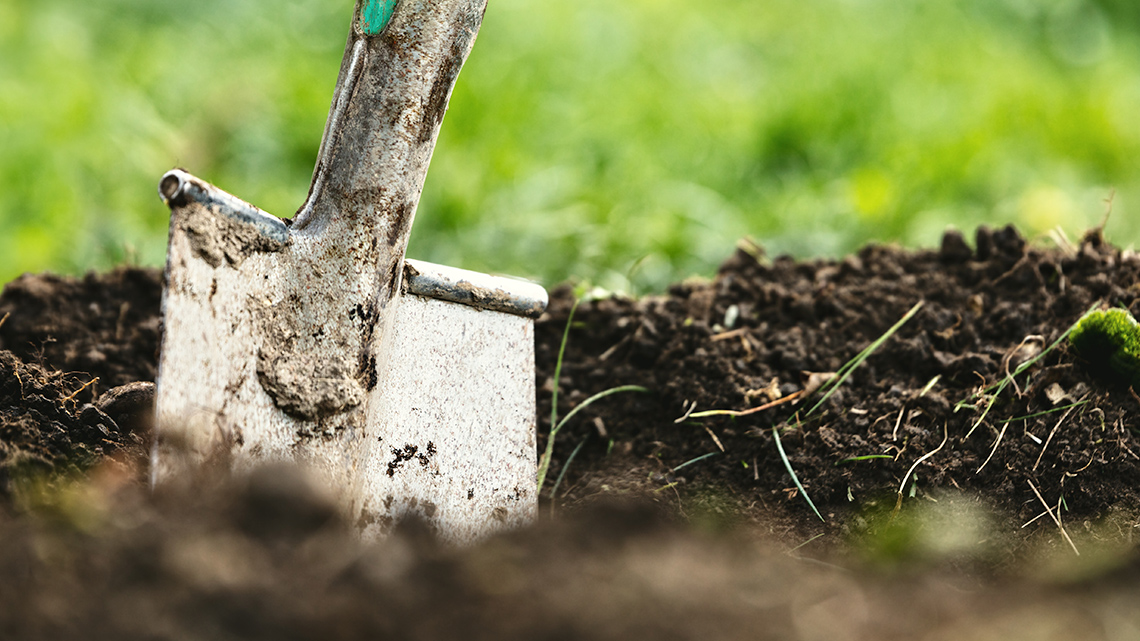
One of these initiatives is being taken on by students at the University of Guelph that focused on land-based learning. Hannah, Brittany, and Kim are Indigenous students who are looking at sustainable food options. They are focusing on the Indigenous way of knowing that “we are only as healthy as our environments” and are planting and harvesting medicinal plants in garden sites that can be accessed by local community members. This promotes environmental sustainability because community gardens restore oxygen into the air and reduce air pollution. It also reduces transportation costs and pollution of transporting food, reduces water runoff, and creates a greater sense of community.
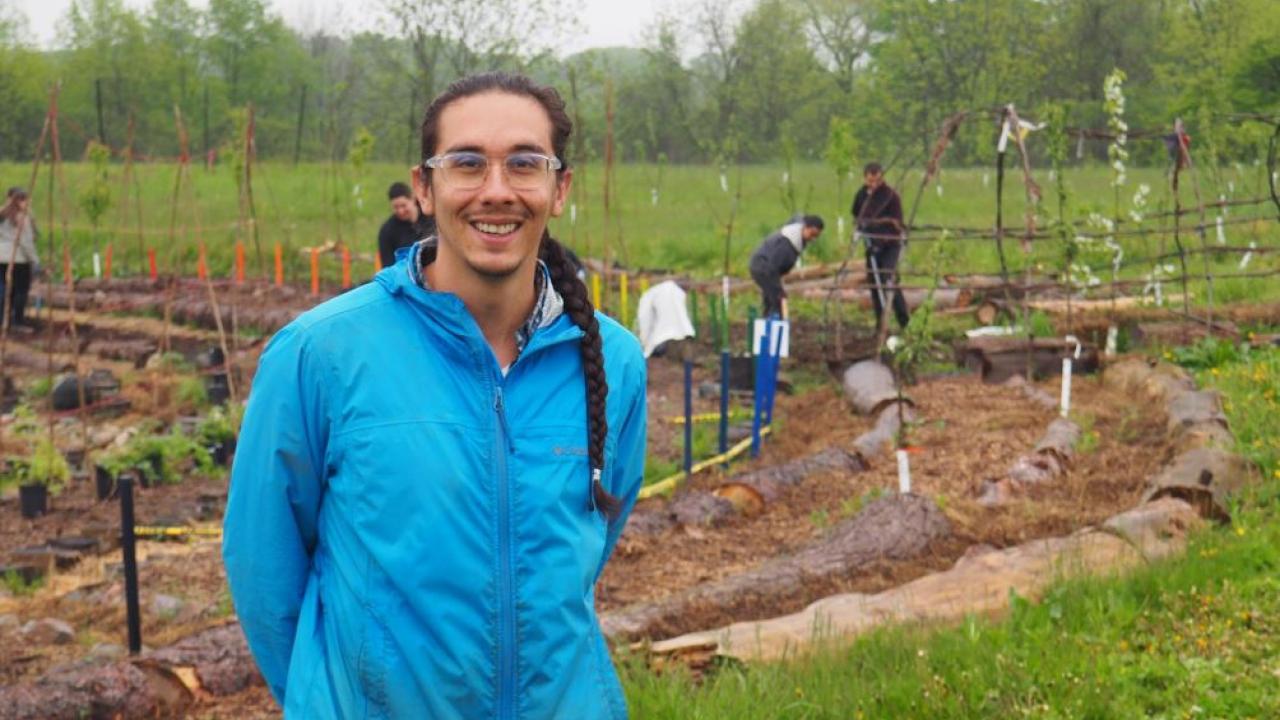
In Cambridge, Ontario, Andrew Judge, along with Indigenous elders and volunteers have created an Indigenous food and medicine garden just outside of town. They are planting things like “wild plums, pawpaw, saskatoon berry, and hazelnuts, as well as sacred medicines such as sweetgrass, sage, and tobacco.” The hope is that the garden will provide people with Indigenous land-based learning and educational programming. The produce from the garden will be donated to local food banks and Indigenous organizations.
There are many benefits to having municipalities and communities working together to organize community gardens based on Indigenous knowledge. Based on what you’ve just explored, choose one of the following reflection questions to respond to orally, digitally, in print, or in another method of your choice.
- How can community gardens promote environmental sustainability?
- How can Indigenous knowledge guide environmental sustainability?
- What other initiatives do you think could help promote environmental sustainability?
Consolidation
Check your understanding!
In this learning activity you explored environmental sustainability specifically through recycling programs and community gardens. Check your understanding of this through the fill-in-the-blank activity.
For each sentence, select the missing word.
Show what you know!
You have been asked by a community to share information with the municipality about the blue box program or community gardens and explain how it could promote environmental sustainability in the community. You can share this information in a method of your choice, such as:
- a letter to the municipality
- an informative video
- a speech or audio recording
- a poster or brochure
- another method of your choice
Consider the following checklist to help guide you.
Your final project should include:
Press Extend Your Learning to check out an extension activity.

As an alternative, you can select an environmental issue in your municipality, community, or a province issue, and discover what is being done to help solve the issue. Consider what other perspectives can be included and determine the effectiveness of the program.
What are some strengths and weaknesses?
Reflection
As you read through these descriptions, which sentence best describes how you are feeling about your understanding of this learning activity? Press the button that is beside this sentence.
I feel...
Now, record your ideas using a voice recorder, speech-to-text, or writing tool.